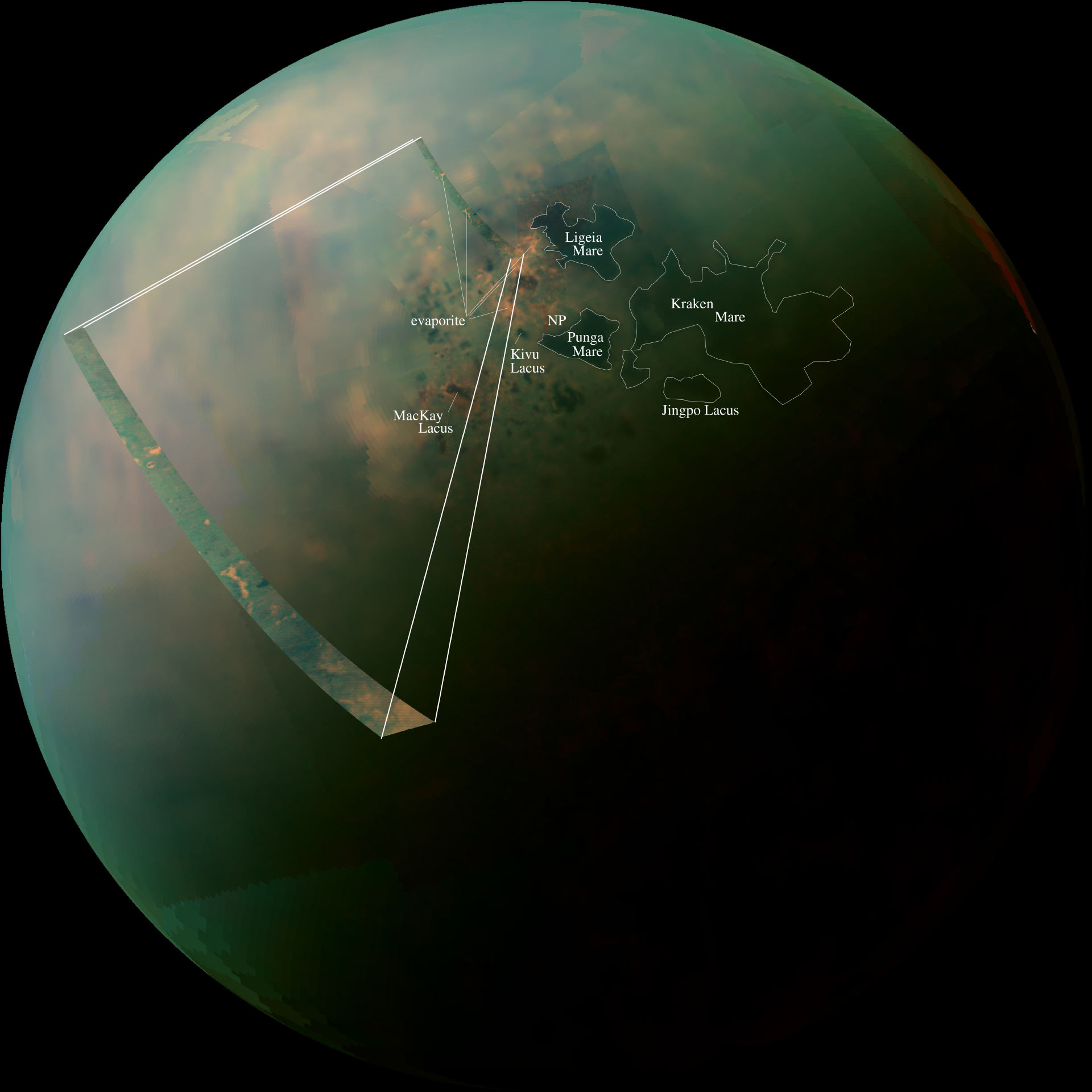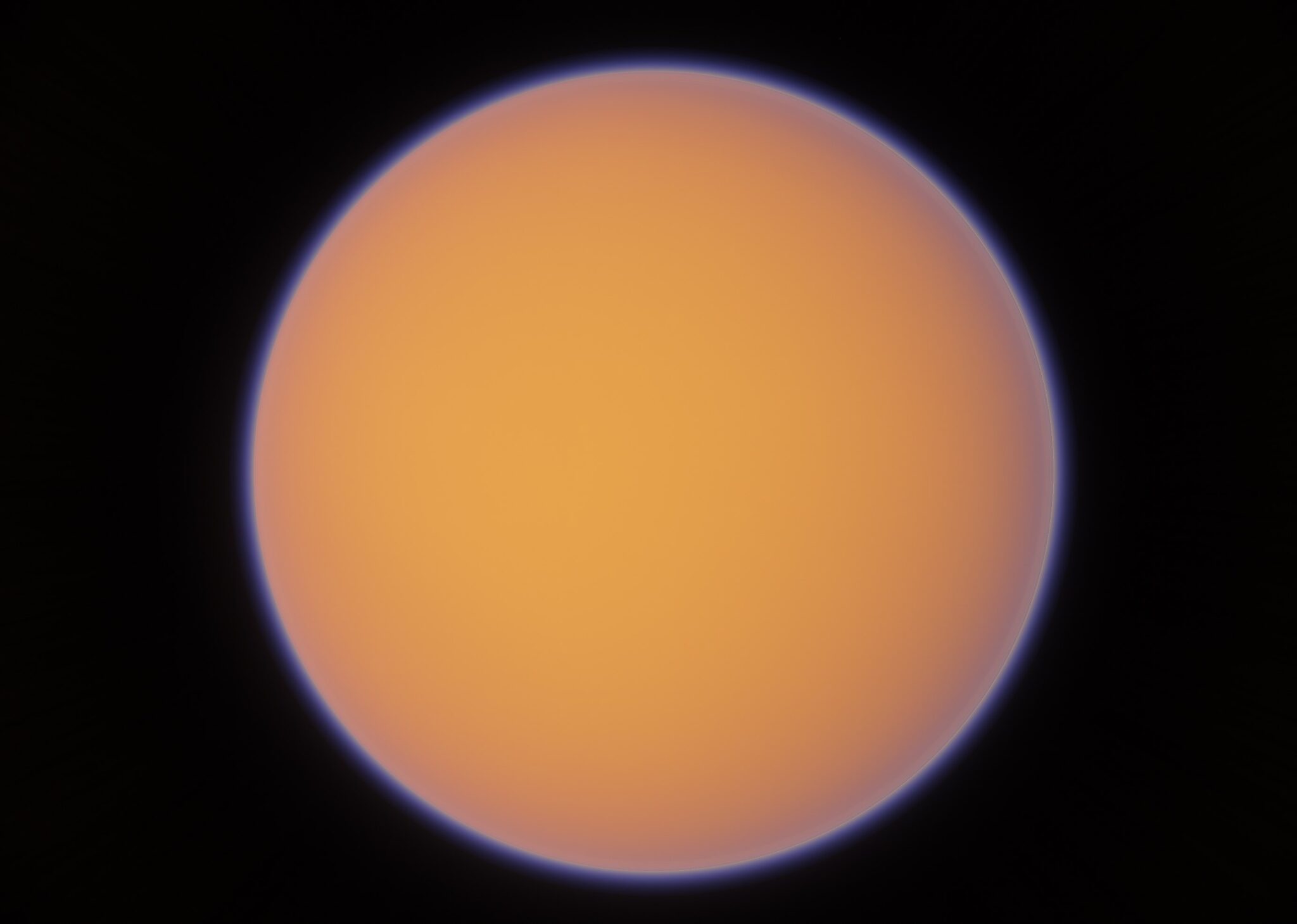When the Cassini spacecraft performed a radar scan of the surface of Saturn’s moon Titan, the results turned out to be pretty impressive and exciting for the scientific world. The probe has discovered giant lakes and seas of liquid methane. Also, among the reservoirs, small islands were noticed, which were called “magical” because of their strangeness. Now the team of scientists believes that these islands may be nothing more than clumps of organic molecules. These molecules first formed in the atmosphere, then fell out as precipitation and accumulated in lakes and seas, and floated on their surfaces.

Cassini’s 3.5 billion km journey
The Cassini probe started its space journey in October 1997, making a journey already at that time unlike anything else in space. On its way, it covered an impressive distance of 3.5 billion kilometers, using the gravitational acceleration of Venus, Earth, and Jupiter. Thus, in the summer of 2004, it arrived at Saturn.
The mission to Saturn lasted for 14 years and ended on September 15, 2017, when Cassini plunged into the atmosphere of the gas giant. During this period, the probe flew around Saturn 290 times, studied its moons in detail, and made the discovery of seven more previously unknown objects.

Of particular interest was the Huygens probe, which separated from Cassini to study the atmosphere of Titan. Titan is Saturn’s largest moon, impresses with its greatness, exceeding even the size of our Moon and Mercury. But the peculiarity of Titan lies in its dense atmosphere and the presence of reservoirs on the surface.
Revealing the Huygens find on Titan
Titan’s atmosphere is also of interest to scientists because of its ability to convert gases such as methane and nitrogen into organic compounds. A team led by Xinting Yu from the University of Texas has conducted a number of studies to unravel this process, in particular when these compounds reach the surface of Titan.
It turns out to be surprising that organic compounds are reflected on the surface in the form of solid particles, even on the surface of lakes. This aroused serious interest among scientists, and they began a systematic study of this phenomenon.

The sponginess of the solid material that reaches the surface and ends up in the lakes of Titan has proved to be key to understanding these phenomena. If these particles were structured like a sponge, i.e. they contained more empty space, they would just float on the surface. On the other hand, if they were solid bodies, their ability to float would depend on their structure; otherwise, they would simply sink to the bottom of the reservoir.
However, not all the mysteries of Titan have been solved. Temporary bright spots seen on radars and dubbed “magic islands” remain the subject of further research and reflection by scientists. They are mysterious objects that seem to be only temporary phenomena, and the unraveling of their nature can lead to new discoveries in the fields of astrophysics and the chemistry of distant worlds.
Earlier, we reported on how the flow rate of rivers on Titan turned out to be very similar to Earth’s.
According to sciencealert.com
Follow us on Twitter to get the most interesting space news in time
https://twitter.com/ust_magazine


